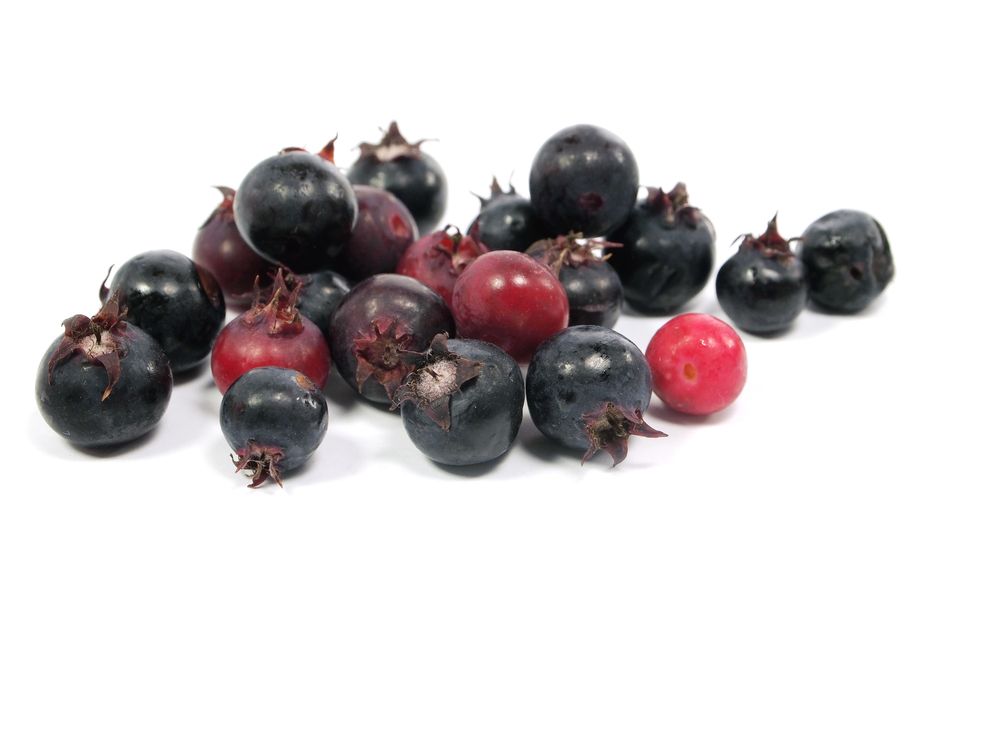Saskatoon Berries Rich in Flavonoids
A review explores the nutritional components of these blueberry look-alikes.

The little-known saskatoon berry (Amelanchier alnifolia Nutt.), or june berry, can only benefit from a review of its nutritional properties. And Czech and Slovakian researchers are helping out, having now compiled an extensive review of published science on this blueberry look-alike.
As it turns out, saskatoon berries contain significant amounts of minerals such as potassium, iron, and magnesium. But it’s their flavonoid profile that appears most valuable. Chemical analysis of these compounds, much of which was published in the last several years, indicates particularly high amounts of compounds such as quercetin, rutin, proanthocyanidins, and anthocyanins. Each of these is popularized as an antioxidant, and anthocyanins are also known for providing the red, blue, and purple pigments of many fruits and vegetables. The anthocyanin contents of saskatoon berries are reportedly similar to levels found in more famous berries, such as blueberries and bilberries.
Like most other plants, saskatoon berries are susceptible to nutrient degradation in certain conditions. In this review, researchers acknowledged a study that found anthocyanins in saskatoon berries can degrade during cold storage. But this shouldn’t turn off manufacturers and consumers. The benefits of consuming flavonoids appear to be many, including anti-inflammatory effects, blood sugar modulation, and maybe even defense against cancers. Continuing research on flavonoids and berries will hopefully elucidate these potential applications.
The saskatoon berry review is now free for download at the journal Molecules.
Kelker Pharma to launch nutritional support system for GLP-1 medication users that features TriBsyn
December 11th 2024B&D Nutritional Ingredients Inc., an exclusive distribution partner of CarnoSyn Brands and Natural Alternatives International Inc., announced that its customer, Kelker Pharma, will be launching the “first science-backed nutritional support system” for GLP-1 medication users, called Nutrilinq Genesis.
Sirio Pharma launches line of ready-to-market organic gummies and softgels called PureOrganix
August 26th 2024The new line is made up of three gummies and one softgel that are formulated to meet stringent EU-Organic certification criteria, and target women’s health, metabolic health, and heart health.
Recent review states that pentadecanoic acid may support cellular stability for better longevity
June 25th 2024According to the paper’s author, Stephanie Venn-Watson, DVM, MPH, deficiency in pentadecanoic acid of ≤0.2% total circulating fatty acids increases the risk of ferroptosis, which a type of cell death cause by the peroxidation of fragile fatty acids in cell membranes that combines with iron thus increasing reactive oxygen species, and disabling mitochondria.

